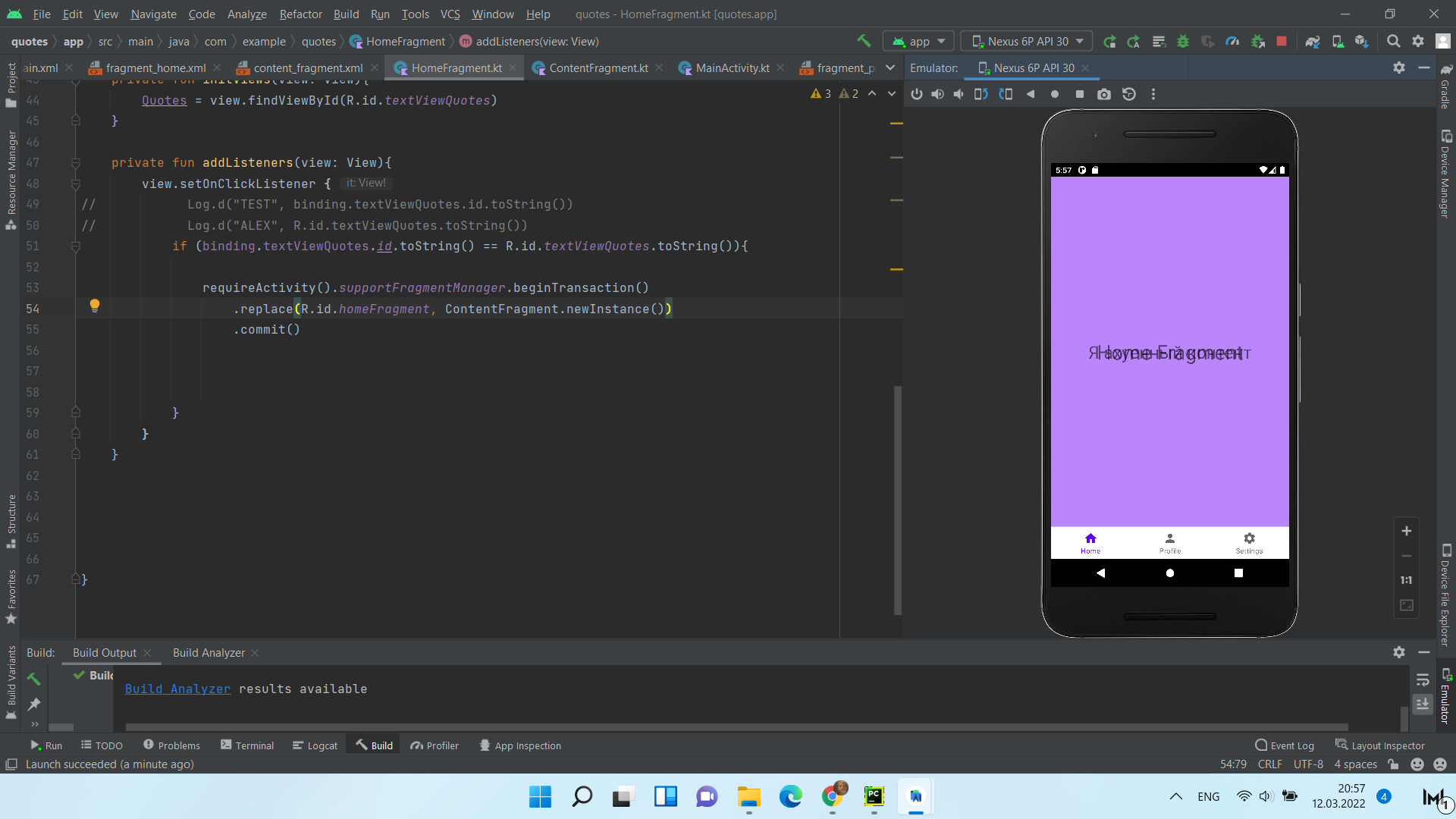Answer the question
In order to leave comments, you need to log in
Why is a fragment overlaid on another fragment when replace?
Friends, hello everyone!
Help to understand the following situation please!
I am in homeFragment, from it I want to launch contentFragment. Everything starts, but the fragments overlap each other! As you can see in the screenshot, layering is in progress. On one fragment, the TextView shows the Home Fragment and on the second I have cool content.

Here is the code of the fragment from which another is called
class HomeFragment: Fragment() {
private lateinit var Quotes: TextView
private var _binding: FragmentHomeBinding? = null
private val binding: FragmentHomeBinding
get() = _binding ?: throw RuntimeException("FragmentHomeBinding is null")
override fun onAttach(context: Context) {
super.onAttach(context)
}
override fun onCreateView(
inflater: LayoutInflater,
container: ViewGroup?,
savedInstanceState: Bundle?
): View? {
_binding = FragmentHomeBinding.inflate(inflater, container, false)
return binding.root
}
override fun onViewCreated(view: View, savedInstanceState: Bundle?) {
super.onViewCreated(view, savedInstanceState)
initViews(view)
addListeners(view)
}
private fun initViews(view: View){
Quotes = view.findViewById(R.id.textViewQuotes)
}
private fun addListeners(view: View){
view.setOnClickListener {
if (binding.textViewQuotes.id.toString() == R.id.textViewQuotes.toString()){
requireActivity().supportFragmentManager.beginTransaction()
.replace(R.id.homeFragment, ContentFragment.newInstance())
.commit()
}
}
}
}class ContentFragment: Fragment() {
override fun onCreateView(
inflater: LayoutInflater,
container: ViewGroup?,
savedInstanceState: Bundle?
): View? {
return inflater.inflate(R.layout.content_fragment, container, false)
}
override fun onViewCreated(view: View, savedInstanceState: Bundle?) {
super.onViewCreated(view, savedInstanceState)
}
companion object {
fun newInstance(): Fragment {
return ContentFragment()
}
}Answer the question
In order to leave comments, you need to log in
Well, actually, everything is clear.
transaction.replace(R.id.frame_layout, fragment).replace(R.id.homeFragment, ContentFragment.newInstance())
(requireActivity() as? CallbackInterface)?.showContentPlease(your awesome content)Didn't find what you were looking for?
Ask your questionAsk a Question
731 491 924 answers to any question